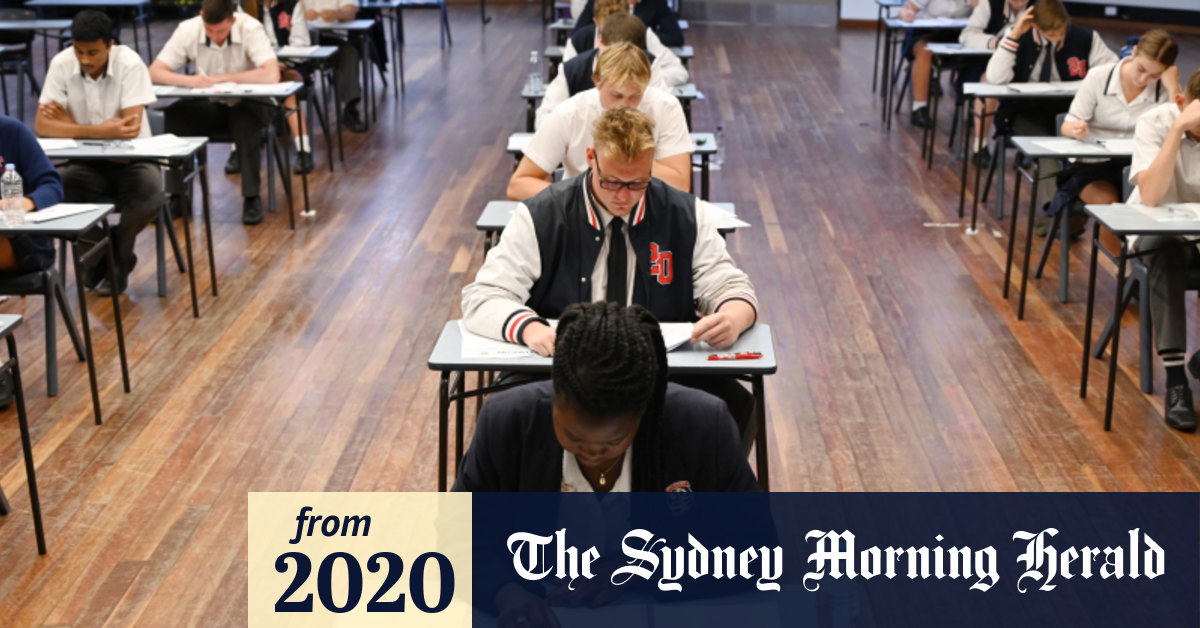- Joined
- Feb 16, 2005
- Messages
- 8,391
- Gender
- Male
- HSC
- 2006
Maybe it's time NESA started publishing the distribution of all band performances in each school? Even better if the UAC releases a median ATAR by school but that seems less realistic.

 www.smh.com.au
www.smh.com.au
Education heavyweights have called for more information about HSC results to be publicly released, saying the focus on band 6 provides a perverse incentive for schools to push students into lower-level subjects.
Releasing only band 6 data also put too much focus on top-performing students, and failed to account for student background, such as economic disadvantage, or reflect student progress or post-graduation outcomes, they said.
Education Minister Sarah Mitchell said she was open to discussing the issue. “I believe we can celebrate both academic success and student pathways after school,” she said.
The chief executive of Catholic Schools NSW, Dallas McInerney, called for a discussion of “whether there is a better way” to report HSC results than the present practice of only releasing information about band 6 results, or marks of 90 or above.
“What we have at the moment is partial and limited, and is there a better way to move beyond that, which still provides meaningful information for us but doesn’t ratchet up the stakes and anxiety around the whole exercise?” he said.
“I don’t think we go backward and report less. We can report better and smarter, but not less. We should all be concerned about how well the school sector is travelling, we all have an interest in that.”
Mr McInerney said NSW could look at other models such as Victoria’s, which releases several data sets for each school, including their VCE performance, the number of students achieving high scores, year 12 completion rates, and whether the students are employed or studying a year after graduation.
NSW could also celebrate achievements in different bands. “There’s a lot to be celebrated for band fives, particularly if those band five achievements represent a massive improvement,” Mr McInerney said.
“In the Catholic sector, we have the lowest post-school unemployment rate, the highest post-school apprenticeship rates, but you’d never see that in the [existing] data.”
Tom Alegounarias, the former chair of NSW Education Standards Authority and president of its predecessor, the Board of Studies, said some schools subtly encouraged students to choose easier courses in order to achieve more band 6s.
“It’s a perverse incentive,” he said. “Because it’s all the data the Herald gets, the number of band 6s, if a school has more kids doing lower-level English there’ll be more band 6s published for that school.”
Mr Alegounarias, now the chair of Sydney University’s Centre for Educational Measurement and Assessment, said the best way to address the problem was to “stop the half-pregnant thing” and provide different kinds of data.
“The misrepresentation and misleading effects of data cannot be solved by hiding the data,” he said. “As someone driven the vast majority of my time in education by equity, I don’t want the data hidden. It’s working class kids who get the low outcomes.
“Band fours and five could be published. The range could be published. The [post-school] pathways issue is an important one. By only publishing band 6, it really is only celebrating the academically orientated students.”
Timothy Wright, the former headmaster of Shore, described band 6 tallies as a game. “All schools play it to some extent because you are limited by media coverage and parent expectation,” he said.
“But there are differing proportions of candidates gaining Band 6s in different courses-it is really hard to get a Band 6 in say Chemistry and easier in say Business Studies.”
Each HSC band contains a description of the standard students have achieved in that subject. They are not designed to be compared.
“We’ve never convinced the community that a band 6 in physics was not designed to be the same as a band 6 in biology or a band 6 in chemistry,” said Professor Jim Tognolini, a psychometrician at University of Sydney.
John Collier, the principal of St Andrews Cathedral School, said no educator supported school league tables, such as those published in news outlets including the Herald. He said band 6 results had become a proxy for school quality, but they weren't "sufficiently robust".
Mr Collier said the only robust way to judge schools’ academic performance was the tertiary entrance rank and post-school destinations, or how students fare after they leave school.
The head of the Association of Independent Schools NSW, Geoff Newcombe, said all sectors educated students from disadvangated background. "It’s important that we look at schools which have success educating students from these backgrounds - not just so parents can have more meaningful information on which to base their decisions, which is important - but to share what’s working well between the sectors so that all schools can benefit,” he said.
The NSW government will begin collecting data on where students go up to five years after they finish school. “This measure reflects the broader value of education and its overall goal which is to equip students for a fulfilling life after school,” Ms Mitchell said.
“I believe this will help us acknowledge more than just academic achievements, as we will have better information on those who take up meaningful training and employment opportunities post school."
Ms Mitchell said it was too early to say whether this data would be shared publicly.
Focus on HSC band six results creating a 'perverse incentive', experts say
Education heavyweights have called for more information about HSC results to be released, saying the current public data pushes students into lower-level subjects.

